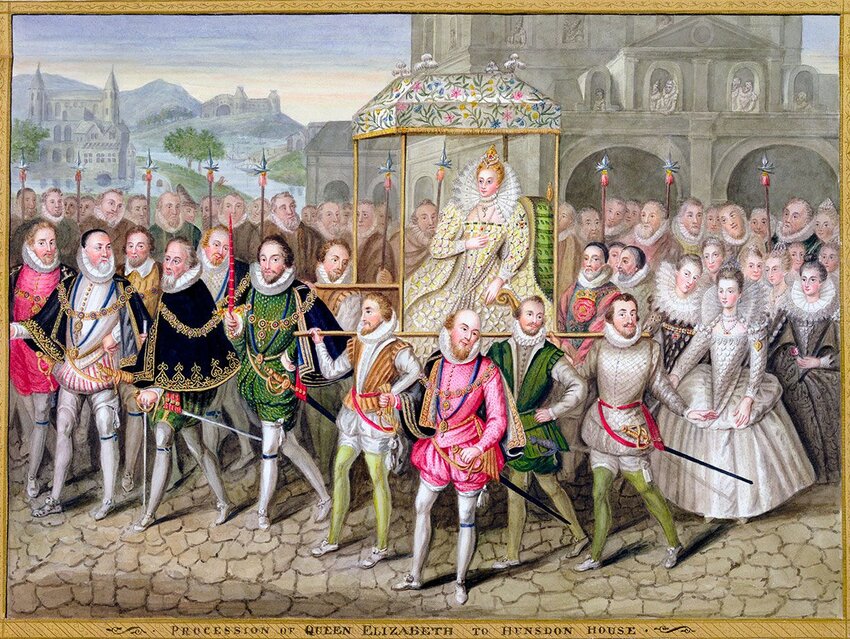From “hungry as a bear” to “a little bird told me,” idioms and metaphors abound with references to animals. Often, the way we describe the creatures reveals as much about us and our society as it does the animals we observe. Take the humble bee. Do we look at a beehive and see a matriarchy, a patriarchy — maybe even a public high school? That depends on who you ask, and when in history you ask them.
Aristotle Hive, Rise Up
Before Queen Beyoncé and the “Bey-Hive,” we had Aristotle and “king bees.” A queen bee is the mother of nearly every bee in her colony, so it would track that egg-laying bees would be female. But Aristotle, despite being known as the founding father of logic, figured these mother bees just couldn’t be female. They seemed to be in charge of bee society, and that, he thought, was a man’s job. He dubbed them “king bees,” sure that they were running a patriarchal bee civilization.
His concept of “king bees” stuck around Western science for millennia. Partly thanks to Aristotle’s influence, ancient and medieval scientists remained perplexed about bee reproduction, even speculating that bees grew on plants. In the meantime, Western scientific circles went on calling those hive leaders “king bees.” A few iconoclasts, such as the 16th-century apiarist Luis Mendez de Torres, did point out that these leading bees were female, but these observations never seemed to reach very far or alter the patriarchal consensus.
The Eliza-bee-than Part
It wasn’t until 1609 that someone finally set science straight. Charls Butler, a vicar and beekeeper (and spelling-reform advocate who believed so firmly in simplifying English spelling that he kicked the “e” out of his own first name), changed it all. He believed firmly that Aristotle had gotten bees wrong. In his book Feminine Monarchie, Butler threw his support behind the argument that beehive leaders were female. This time, the information made waves. While Butler certainly didn’t make much headway with spelling reform, he did change one piece of the English language: Aristotle’s “king bees” would henceforth be known as “queen bees.”
Maybe it’s not a coincidence that Charls Butler himself came of age during a feminine monarchy: His book was published just six years after the death of Queen Elizabeth I. The idea of a woman in charge of a beehive, or a country, likely seemed more normal to him and his readers. However, Butler did get a few things wrong. He claimed that, though queen bees ruled the hive, they didn’t play a role in reproduction. This might have reflected Elizabethan ideas about women and leadership. Queen Elizabeth was known as “The Virgin Queen,” and was notable for her refusal to marry and have children. Butler’s insistence on the celibacy of queen bees might have been yet another example of how human language referring to animals can reflect human social norms.
(Prom) Queen Bee
It took another few centuries, but around the turn of the next millennium, “queen bee” gained a whole new meaning. Now, it can refer not just to an insect but to a socially dominant girl or woman, especially one with a penchant for bossing around peers. Rosalind Wiseman’s 2002 self-help book Queen Bees and Wannabes, which described bullying among teenage girls, likely popularized the idiom and encouraged a particular association with high school. Wiseman’s book was the inspiration for Tina Fey’s 2004 hit movie Mean Girls, starring Lindsay Lohan and Rachel McAdams. That movie’s dialogue may have done more than its fair share to cement the meaning of the idiom. In one of the comedy film’s more suspenseful moments, Lohan’s character wonders in an inner monologue: “Was I the new queen bee?”
If Aristotle had his way, maybe we’d be fretting about teen king bees — fighting for power and a seat on the homecoming court.
Featured image credit: Historica Graphica Collection/ Heritage Images via Getty Images

